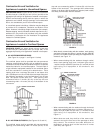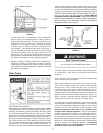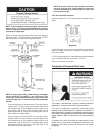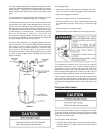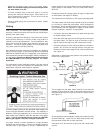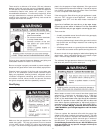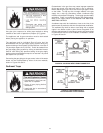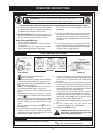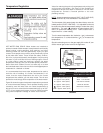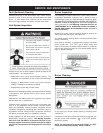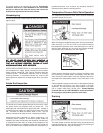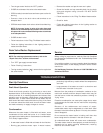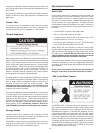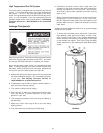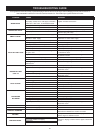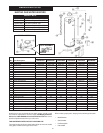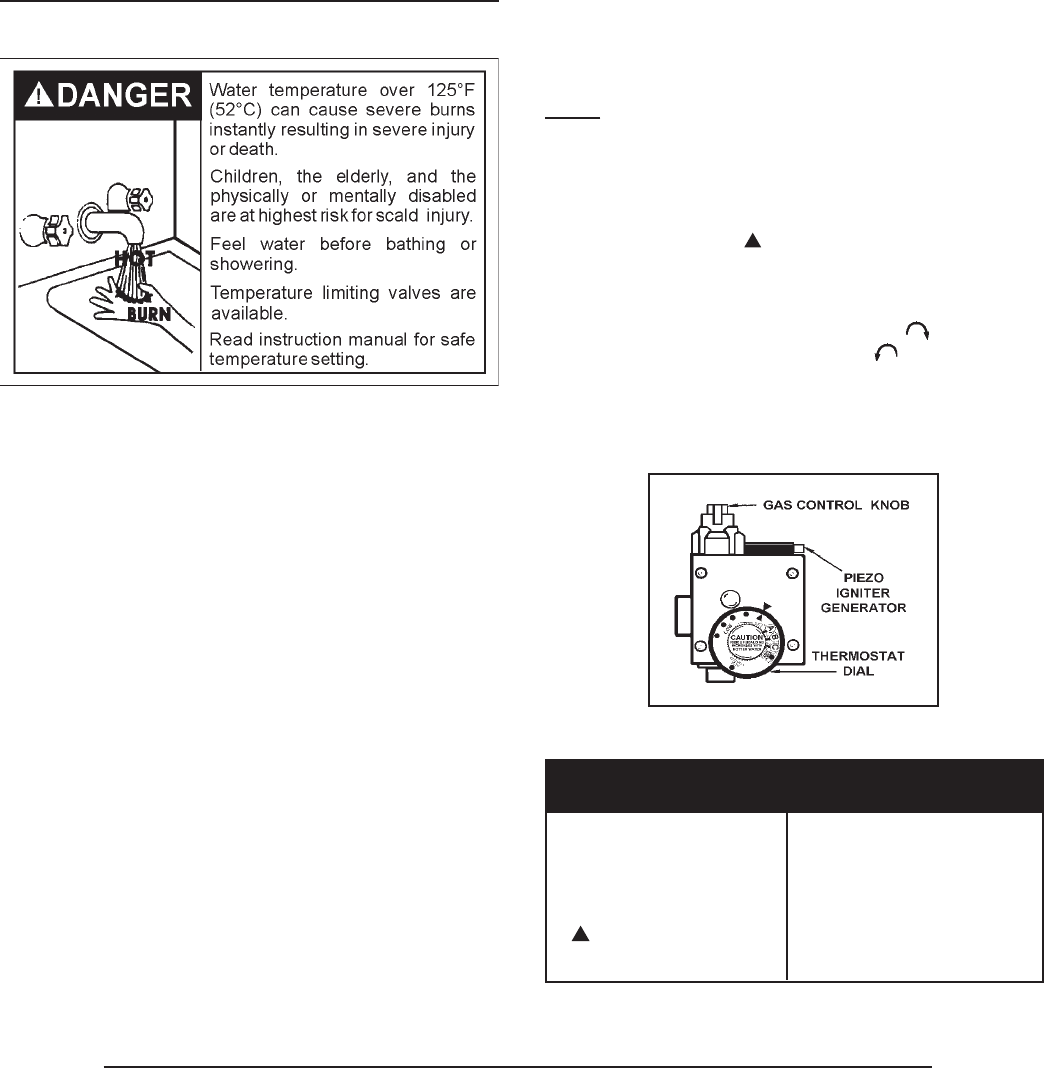
20
Valves for reducing the point-of-use temperature by mixing cold
and hot water are available. See Figure 8. Also available are
inexpensive devices that attach to faucets to limit hot water
temperatures. Contact a licensed plumber or the local
plumbing authority.
NOTE: A water temperature range of 120°F-140°F (49°C-60°C)
is recommended by most dishwasher manufacturers.
The thermostat of this water heater has been factory set at its
lowest position (PILOT LIGHTING). It is adjustable and must
be reset to the desired temperature setting to reduce the risk of
scald injury. The mark (
) indicative of approximately 120°F
(49°C) is preferred starting point. Some states have a
requirement for a lower setting.
Turn the water temperature dial clockwise (
) to decrease
the temperature, or counterclockwise (
) to increase the
temperature.
Should overheating occur or the gas supply fail to shut off, turn
off the manual gas control valve to the appliance.
FIGURE 22.
Temperature Time to Produce 2nd & 3rd
Settings Degree Burns on Adult Skin
VERY HOT= approx. 160°F (71°C)
About 1/2 second
C = approx. 150°F (66°C) About 1-1/2 seconds
B = approx. 140°F (60°C) Less than 5 seconds
A = approx. 130°F (54°C) About 30 seconds
= approx. 120°F (49°C) More than 5 minutes
LOW = approx. 80°F (27°C) - - - - - - - - - - - - - - - -
FIGURE 23.
Temperature Regulation
HOT WATER CAN SCALD: Water heaters are intended to
produce hot water. Water heated to a temperature that will satisfy
space heating, clothes washing, dish washing, and other
sanitizing needs can scald and permanently injure you upon
contact. Some people are more likely to be permanently injured
by hot water than others. These include the elderly, children,
the infirm, or physically/mentally handicapped. If anyone using
hot water in your home fits into one of these groups or if there
is a local code or state law requiring a specific hot water
temperature at the tap, then you must take special precautions.
Never allow small children to use a hot water tap, or to draw
their own bath water. Never leave a child or handicapped person
unattended in a bathtub or shower.
It is recommended that lower water temperatures be used to
avoid the risk of scalding. It is further recommended, in all
cases, that the water temperature be set for the lowest
temperature that satisfies your hot water needs. This will also
provide the most energy efficient operation of the water heater.
Figure 23 shows the approximate water temperatures produced
at various thermostat settings. Short repeated heating cycles
caused by small hot water uses can cause temperatures at
the point of use to exceed the thermostat setting by up to 30°F
(17°C). If you experience this type of use you should consider
using lower temperature settings to reduce scald hazards.



